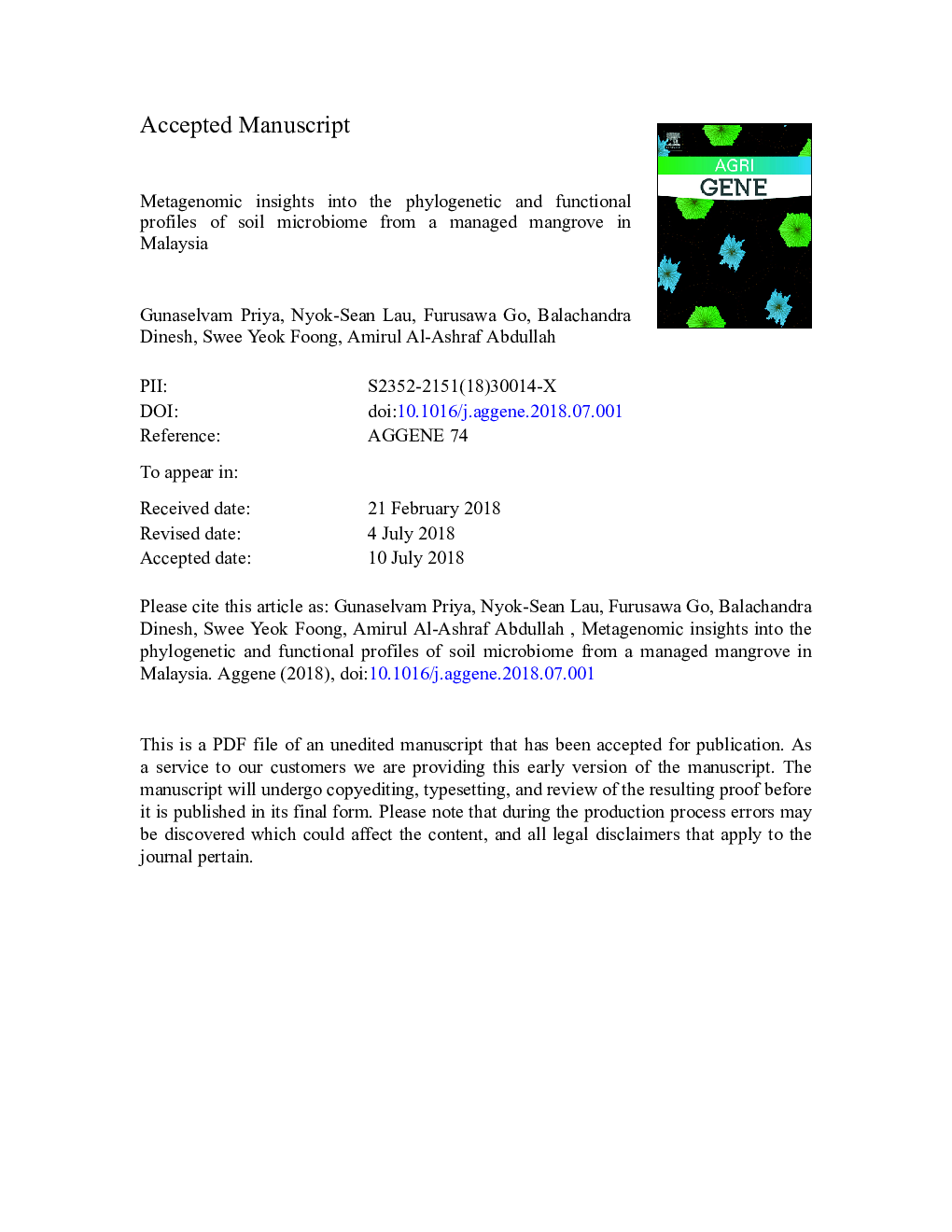| Article ID | Journal | Published Year | Pages | File Type |
|---|---|---|---|---|
| 8634862 | Agri Gene | 2018 | 42 Pages |
Abstract
The Matang Mangrove Forest Reserve (MMFR) in Malaysia has been acknowledged as the best sustainably-managed mangrove forest in the world. The management employed a 30-year rotation cycle to enable harvest of mangrove timbers, followed by replanting and series of thinnings. Information on soil microbial diversity and its functional capability in managed mangrove is scarce. To this end, we analysed high-throughput metagenomic datasets from two sites at MMFR with distinct features: the Virgin Jungle Forest and the harvested Productive Zone. Taxonomic classification of sequencing reads using metagenomics RAST (MG-RAST) revealed distinct differences at phylum and class level for bacteria present in both samples. Productive zone, which consisted of managed forest blocks, exhibited total organic carbon content that was 18.7 times higher than that of Virgin Jungle Forest. The Productive Zone microbial community was overabundant in genes related to carbohydrate metabolism, especially enzymes involved in the degradation and utilization of polysaccharides from plant cell wall. Functional analysis focusing on carbohydrate degrading enzymes revealed an array of enzymes involved in hemicellulose, cellulose and pectin utilization enzymes in Matang mangrove metagenomes. Overall, differences in taxonomic composition and function profile of soil microorganisms were observed between Productive Zone and Virgin Jungle Forest. The results presented in this study have important implications in understanding managed mangrove microbial assemblage and provide important resources for the discovery of bacterial species and enzymes involved in litter processing.
Keywords
Related Topics
Life Sciences
Agricultural and Biological Sciences
Animal Science and Zoology
Authors
Gunaselvam Priya, Nyok-Sean Lau, Go Furusawa, Balachandra Dinesh, Swee Yeok Foong, Al-Ashraf Abdullah Amirul,
